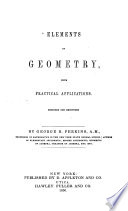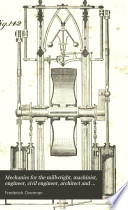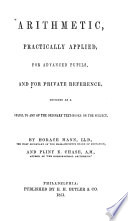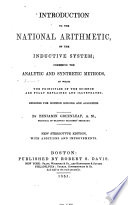 | George Roberts Perkins - Geometry - 1850 - 332 pages
...shall have (9+3)x(9-3)=12x6=9 " -3'=81-9=72. PROPOSITION VIII. THEOREM. In any right-angled triangle, the square of the hypothenuse is equal to the sum of the squares of the other two sides. Let ABC be a right-angled triangle, having the rightangle C ; then... | |
 | Jeremiah Day - Geometry - 1851 - 418 pages
...referred to. 94. Other relations of the sine, tangent, &c., may be derived from the proposition, that the square of the hypothenuse is equal to the sum of the squares of the perpendicular sides. (Euc. 47. 1.) In the right angled triangles CBG, CAD, and CHP,... | |
 | Frederick Overman - Building - 1851 - 452 pages
...angle from the middle of the hypothenuse is equal to half the hypothenuse. In a right-angled triangle, the square of the hypothenuse is equal to the sum of the squares of the two sides. If an angle be bisected by a right line,' which cuts the base, the segments... | |
 | Charles William Hackley - Trigonometry - 1851 - 536 pages
...and a very simple formula depending upon the well-known property of the right angled triangle, that the square of the hypothenuse is equal to the sum of the squares of the other two sides, a formula expressing the value of the sine of half an arc in terms... | |
 | American Oriental Society - Oriental philology - 1860 - 632 pages
...converse process. This is simply an application of the familiar rule, that in a rightangled triangle the square of the hypothenuse is equal to the sum of the squares of the other two sides, to the triangle produced by the gnomon as perpendicular, the shadow... | |
 | William Smyth - Algebra - 1851 - 272 pages
...the other two sides ? NOTE. In solving this and other similar questions, it will be recollected that the square of the hypothenuse is equal to the sum of the squares of the other two sides, and the area is equal to one half the product of these sideS. ANS.... | |
 | Edward Deering Mansfield - Education - 1851 - 348 pages
...in the year five hundred and ninety before Christ, who discovered the fundamental proposition that the square of the hypothenuse is equal to the sum of the squares of the other two sides. Euclid appeared in the year three hundred BC His object was to systematize... | |
 | Horace Mann - 1851 - 384 pages
...lines 10ft. apart. This mode of operation is founded on the property of right-angled triangles, that the square of the hypothenuse is equal to the sum of the squares of the other two sides. A roof is said to have a true pitch, when the length of each rafter... | |
 | Benjamin Greenleaf - 1851 - 332 pages
...side AC the hypolhenuse, and the angle at B is a right angle. ART. 272. In every right angled triangle the square of the hypothenuse is equal to the sum of the squares of the base and perpendicular, as shown by the following diagram. It will be seen by examining... | |
 | Thomas Kentish - Geometrical drawing - 1852 - 258 pages
...29, and raise a perpendicular BC = 17. Join AB; apply it to the scale, and it will be found 33.6. For the square of the hypothenuse is equal to the sum of the squares of the base and perpendicular. It is required to find the diameter of a copper, that, being... | |
| |